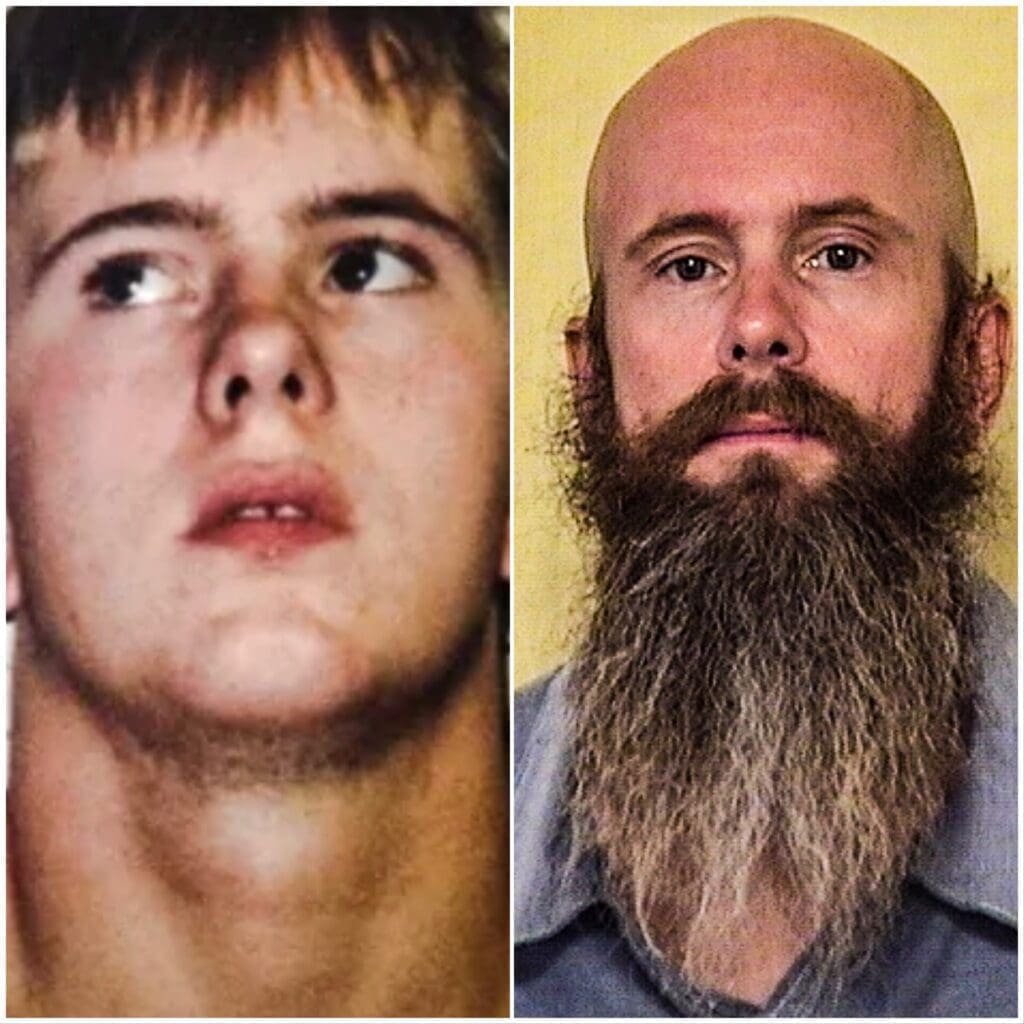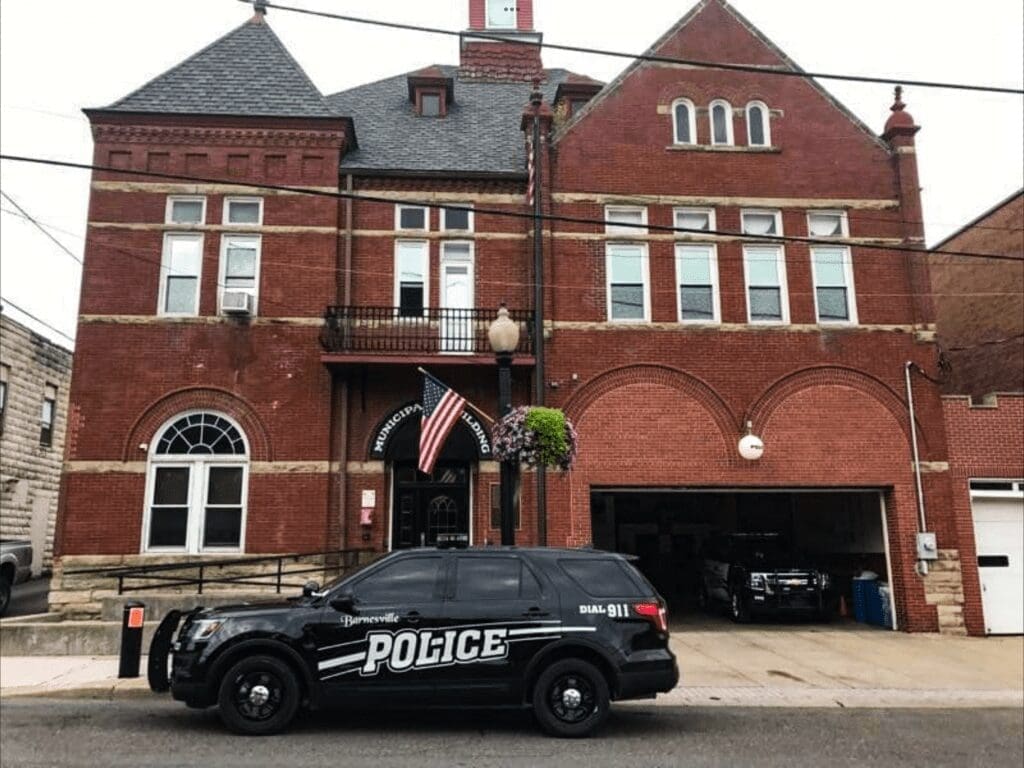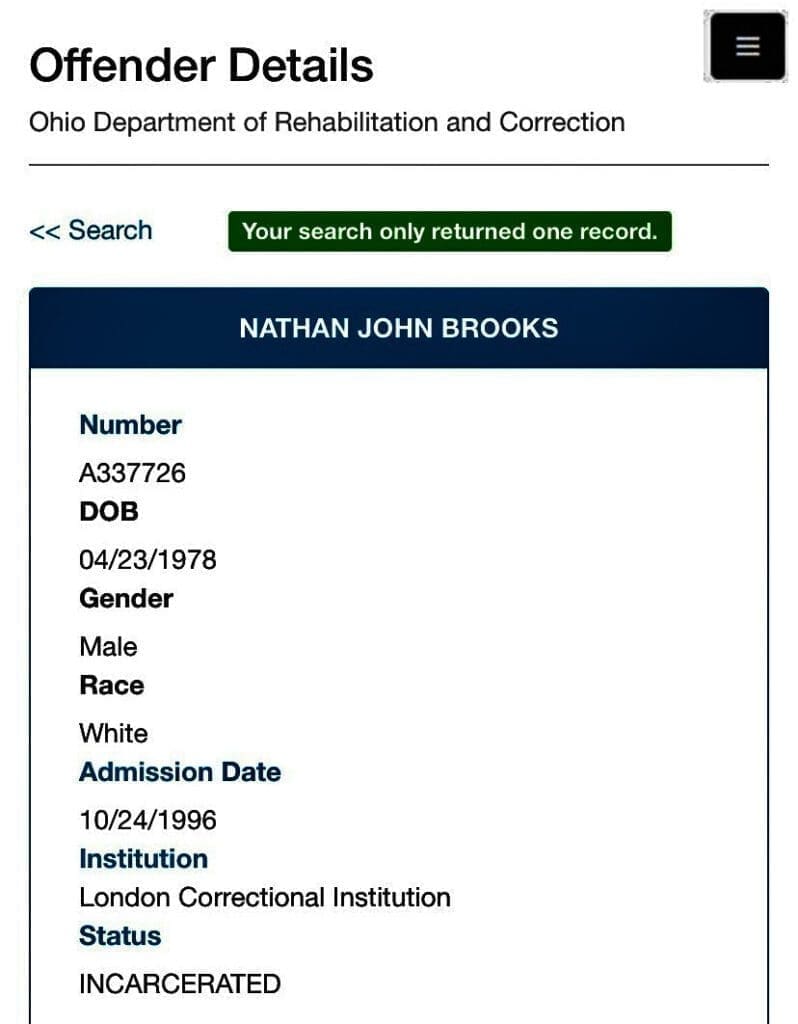The 17-year-old who slaughtered his mother and father on September 30, 1995, will become eligible for parole in August 2025, according to the Ohio Department of Rehabilitation and Corrections.
Nathan Brooks, now 44 years old, was convicted of two counts of aggravated murder in October 1996 and has been incarcerated in the London Correctional Institution for 26 years. He was sentenced to a pair of 20-year life sentences plus an additional three years for the use of a firearm while committing the murders. The life sentences, as per the late Belmont County Charles Knapp, were to run consecutively.
“It’s hard to believe it’s been that long since that horrific night,” said Stan Galownia, retired administrator of the Belmont County Jail and a deputy for more than 32 years. “I know I was a young man, only 25 years old, when that tragedy happened, but it doesn’t seem that long ago, to be honest, and I guess that’s because of how clear my memories are about certain things.
“I remember the shock that those murders spread through this county and this entire valley. There were a lot of people who said Nathan was only the leader of a satanic cult and that there were a lot of more satan worshippers in the area,” he recalled. “People were really freaked out, and if you think about it, we live in ‘Little Town, USA,’ and that’s usually where all of the worst crimes take place.”

Brooks is Prisoner #A337726 today at the London Correctional Institution in London, Ohio. It’s a facility that rests west of Columbus and is about 160 miles away from his hometown by of Bellaire, and it’s where he has resided since his arrival on October 27, 1996.
Brooks was arrested near the Mount Zion Cemetery soon after his brother, 16-year-old Ryan Brooks, called the police once he discovered his deceased parents in the early morning hours of Sept. 30, 1995. A jury of six men and six women found Brooks guilty on two charges of aggravated murder and of using a firearm in the commission of a felony. Deliberations in the double murder case took under three hours to complete.
According to Ohio Revised Code Section 5149.10, the Parole Board was created as a section within the Adult Parole Authority consisting of up to 12 members. The Parole Board, however, currently consists of eight members whose primary statutory duties include conducting release consideration hearings on all parole-eligible inmates and providing clemency recommendations to Gov. Mike DeWine, according to the state’s Department of Rehabilitation and Corrections website.

“I have no idea what the parole board may decide, but I can tell you there are still a lot of people who have been on edge since those murders took place,” Galownia said. “There were a lot of rumors flying around back then, and then the trial proved a lot of the rumors to be true, and I think one thing that really shook people up was the fact Nathan did have a list of people he was going to kill that night.
“No one really knows why it all stopped with his mother and his father, but when deputies arrived to that scene, it was the first time anyone saw what they saw inside that house,” he said. “I know (retired) Sheriff (Tom) McCort was trying to keep a lot of the details quiet, but word got out about the nature of the murders and about things like the punch bowl and all the satanic symbols. That’s why Bellaire canceled their Halloween that year.”

Behind Bars in Barnesville
Chief Dave Norris currently is 69 years old and is the school resource officer at Barnesville High School, but in the mid-1990s he was the chief of police of the Barnesville Police Department.
Brooks was taken to Norris about a week after his arrest so he could be jailed in city’s tiny, two-cell facility alone instead of in close proximity of other prisoners for safety reasons.
“He was always nice and polite to me, but because I knew exactly what he did to his parents, I wouldn’t turn my back on him ever,” Norris recalled. “I didn’t get too close. We talked, but I don’t remember having any major conversations with him.”
But what topics would Brooks bring up? Football? Girls? Satan?

“He would ask about my garden,” said Kathy Norris, Dave’s wife and Barnesville’s primary dispatcher. “He said his mother had a nice garden, and that he would help her with it at times. But that talk was really only in passing when we took his meals to him. No one except for the attorneys and his family members would stay back near the cell for any amount of time.
“He said to us what he thought he wanted us to hear. I think he wanted us to think he was a nice guy,” she continued. “He was like the kid next door most of the time. He was a friendly kid, but he was there for a reason.”
Brooks was in Barnesville a little more than eight months, the retired police chief believes, and never did Norris allow himself to get too close literally and figuratively.
“I can still picture myself standing back by that cell and Nathan having that smile on his face. He was real respectful to us,” he remembered. “I never felt threatened by him, but I was careful to never put myself in the wrong position.
“I just know that my life couldn’t mean anything to him if he could do what he did to his parents,” Norris insisted. “Satan or no Satan, your parents are your parents.”

Numb Until Arrival
Sheriff McCort made the decision to jail Brooks in Barnesville because, in the regular jail, there was no way to keep the killer separated from the other inmates. The jail at the time, Galownia explained, was the “old jail” and not the current facility near the campus of Ohio University Eastern.
“It was much different than what we have now, and that’s because it was three floors back then with people on top of each and close to each other most of the time,” he recalled. “With what Brooks did, no one knew what to expect so to keep him in Barnesville all by himself seemed like the best option at the time.
“And when I first encountered Nathan Brooks, he was numb. He did not speak many words and that was odd to me for a boy that age. He responded to my questions, but he didn’t initiate much,” the retired deputy said. “What I remember was that he was a young boy who was very distant. He was polite and compliant, but oddly quiet.”
Brooks ate his meals, followed directions, and bathed when instructed, but never mentioned his crimes.

“And that was OK, really, because we were told not to discuss the case with him because it could put the investigation in jeopardy, and no one wanted him to walk free after doing what we knew he did. After a while, he seemed to be more comfortable around us, but after he would have his private meetings with his team of attorneys at the Sheriff’s Office, he would come to us and be back into that numb state. He wouldn’t talk for hours if not a day or two,” Galownia said. “It was like when he was reminded of what he did, it upset him to the extent that he would just go silent. It wasn’t like he was put on suicide watch, but it concerned us because, well, it was frightening to see him that way again.
“When I first met him, he seemed very dark and distant, and I had never seen someone with dark eyes like Nathan had. He was numb,” he said. “We never had very involved conversations, but those meetings put Nathan in a different place … a very dark, different place.”
Brooks read books, watched television, made a phone call or two, and liked to draw, too, during his incarceration at the Barnesville jail. Never, according to Galownia, was he classified as a “problem inmate,” but precautions were always in place because, well, one of his murder weapons was a hacksaw.

“I don’t want to say he scared me because that’s not what it was. But it was eerie, if that makes sense,” the retired deputy said. “I think I feared what he might do, and I’m telling you, I’ll never forget his eyes. I learned during my career that when I’ve looked into someone’s eyes and they’re nothing but black and empty, there’s something very wrong.
“There were two parents dead, and we knew he was hunting down his younger brother before he was arrested, so yes, something was very wrong, but then we learned about the hit list of names of the others he wanted to kill,” Galownia said. “I wasn’t scared of him, but he was a very empty young man who had those empty eyes and that blank stare, so yes, he was very eerie to me.”
In media reports at the time of the murders, Brooks had admitted to killing his parents to Sheriff McCort on the night of the double homicide, and the boy reportedly said, “I can’t stop this. I tried,” and “I need help. It keeps coming.”
The 12-person jury took under three hours to return the guilty verdicts, and Brooks was quiet before his sentencing. He did not react when Judge Knapp remanded him to prison for decades, Galownia recounted, and he remained silent while deputies prepared him for transport. During a stop at the sheriff’s administration building, though, Brooks asks Galownia the one and only question he ever posed to the retired deputy.
“He asked me what prison was going to be like, or something along those lines. ‘What’s it going to be like when I get there,’ or something like that,” he said. “I don’t know, maybe that’s when it all became real for the young man, I don’t know.
“And here we are now, 27 years later, and Nathan will be eligible in a few years,” Galownia added. “I’m real sure a lot of people are going to be paying attention to that hearing.”









Love the facts behind the story. But it’s So sad anyone would do this to their parents tho
Comments are closed.